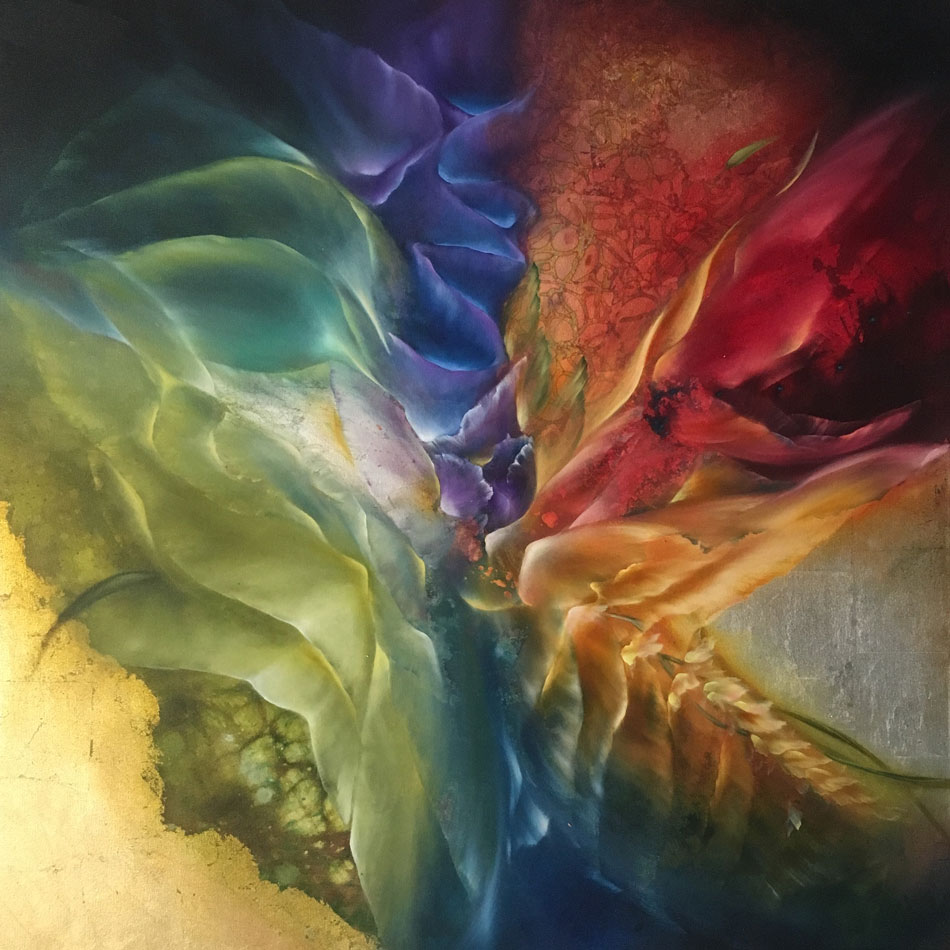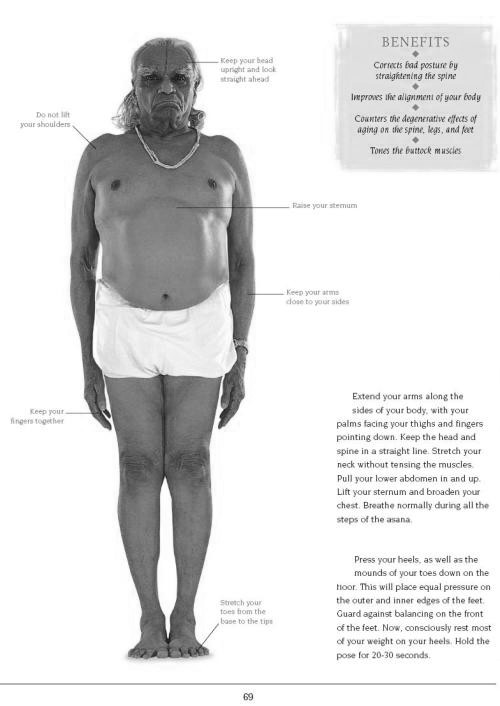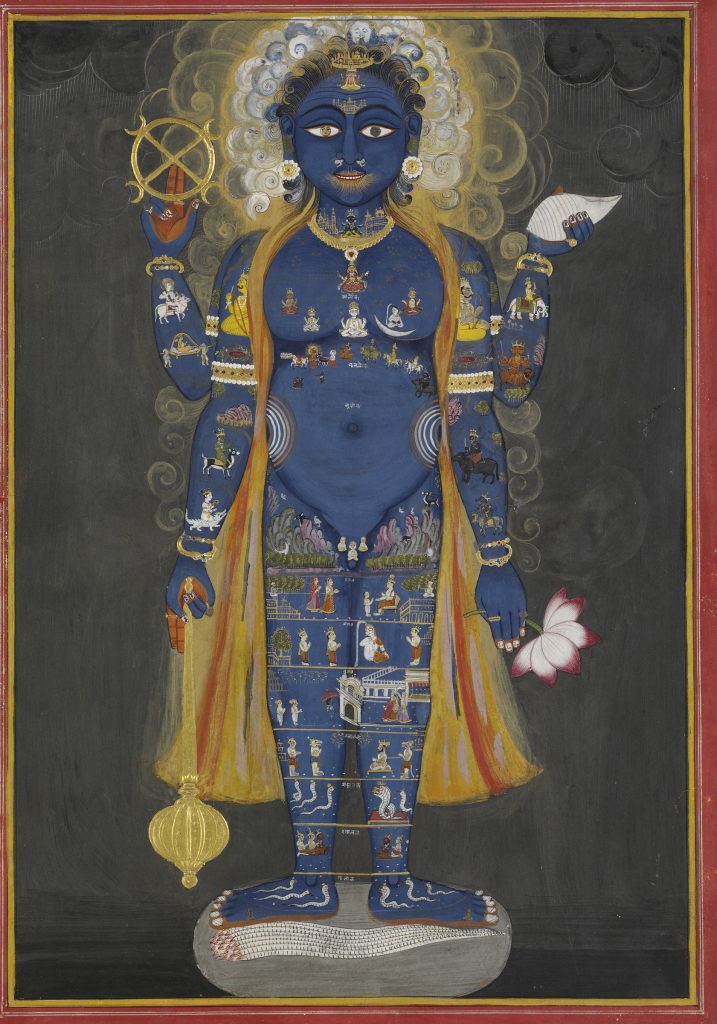Exercise 10
Tāḍāsana
Difficulty level – 1 (easy)
Time commitment : 10 minutes thrice a week

We are nearly halfway through the course, and it’s time to introduce you to our first āsanā.
A few points to note:
- Time to practice – Ideally before sunrise or during sunset. However, for beginners, early morning or late evening is fine, but on an empty stomach (2 hours after eating a light meal)
- Place – A calm, quiet and well-ventilated place would do. Since this āsanā is a primary posture, not requiring too much space, it can be done on your balcony as well.
- Yoga mat – is not necessary for this āsanā. A rug would suffice. Not too soft though.
How you do it
Preparatory
Don’t start cold. Perform an initial set of basic warm-up exercises – rotate your feet, your knees, your hips, shoulders, wrists and head, three counts clockwise, three counts anti-clockwise, slowly and in succession.
ताडासन (Tāḍāsana) – also known as समस्थिति (Samasthitiḥ).

Physical
- Stand with the feet together, or about 10 cm apart, and the arms by the sides.
- Lift and spread your toes and the balls of your feet, then lay them softly down on the floor. Rock back and forth and side to side. Gradually reduce this swaying to a standstill, with your weight balanced evenly on the feet.
- Steady the body and fix your eyes on a point slightly above the level of the head.
- Activate your thigh muscles and lift your knee caps. Tuck your pelvis and tighten your buttocks.
- Hang your arms beside your torso with your hands gently engaged, fingers towards the floor.
- Imagine a line of energy all the way up along your inner thighs to your groin, and from there through the core of your torso, neck, and head, and out through the crown of your head. On an inhale, roll your shoulders up to your ears and on an exhale, roll your shoulders down your back. This straightens your spine and improves posture.
- Balance the crown of your head directly over the center of your pelvis, with the underside of your chin parallel to the floor, throat soft, and the tongue wide and flat on the floor of your mouth. Soften your eyes.
- Start with a 30 second count – progress upto a minute. This is one round.
- Practice 5-8 rounds, with a few seconds of relaxation between rounds.
Breathing
Gentle breathing, without strain or effort. Take in deep slow inhalations, with an expanded chest, and deep slow exhalations, with your stomach moving towards your spine. Your breathing should not be noisy – rather, should feel like the gentle waves of a calm ocean.
Awareness
Maintain awareness on the whole body, from top to bottom, and on maintaining balance and on the breath. Try to clear your mind of unwanted thoughts. You do not need to focus or concentrate – just be aware.
Benefits
This āsanā helps develop physical and mental balance. The entire spine is stretched and loosened, helping to clear up the congestion of the spinal nerves at the points where they emerge from the spinal column. The whole body is engaged, yet not strained – hence this āsanā serves as an excellent warm-up or preparatory āsanā for more advanced asanas in a sequence.
Things to note
The key to āsanā practice is breathing and awareness. Without these aspects, yog is merely physical exercise.
As you practice this āsanā, begin to move your awareness around your body – a kind of a body scan, to connect with each part of your physicality, and be aware of your physical nature and every aspect of it. This āsanā is also practised between other advanced āsanās, to come back to position and reflect on the benefits of the preceding āsanā.
Variation
Beginners can stand with their backs to a wall, with the back of your head, shoulders, buttocks, and heels touching the wall, for good posture. Once stabilised, can move towards practising without the support of the wall (in 1-2 weeks).
More advanced practitioners can practice this āsanā with your eyes closed, or try raising your hands over your head for a full stretch. You can watch this video for instructions.
स्थिरसुखमासनम्
sthira-sukham-āsanam
Yoga Sutrās of Patanjali 2.46
sthira – strong; steady; stable; motionless
sukham – comfortable; ease filled; happy; light; relaxed
āsanam – posture; seated position; physical practice
Steady and comfortable is posture.
Āsanā is one of the eight limbs of traditional yoga. Unfortunately, the current trend of yoga focuses extensively only on this aspect, ignoring the fact that the goal of practice is āsanā siddhi – which means sitting comfortably in one position for hours at end – comfortable physically, in mind and in emotion.

Hiranyagarbha Das says – Actually āsana-siddhi takes place on four levels. The first is that of the physical āsana itself. The second comes with the practice of prāṇāyāma. The third comes with pratyāhāra, whereby one withdraws the senses into the mind. The fourth is when one is liberated from the body and free to enter deeper levels of meditation. In all these levels there are different achievements and one comes closer to real āsana- siddhi, which is to be solid (sthira) for long periods of time, while sukham, feeling comfortable and undisturbed by the body.
In a very real sense, yoga sādhanā really only begins after āsana-siddhi.
A far cry from the pretzel twists you see on Instagram, in the name of yoga.
